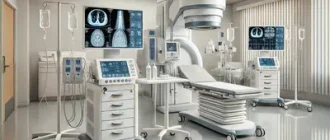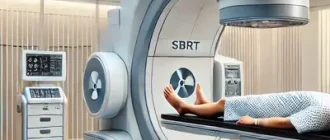Therapeutic menopause relief options offer ways to manage hot flashes, mood shifts, and sleep problems, and many women look for modern approaches that actually work. They function like stabilizing tools that help keep the body steady when hormonal changes make everything feel unpredictable. This sets a direct path toward understanding which methods are helpful and which ones may fall short.
Therapeutic menopause relief, presented through options shaped by individual needs, now includes modern strategies that range from lifestyle adjustments to targeted medical treatments. About one-third of women face symptoms strong enough to require dependable support, while others need only light intervention. These differences show why choosing the right level of relief matters.
During this stage, when a woman deals with repeated heat surges or ongoing restlessness that disrupts daily life, she often turns to modern solutions that promise steadier comfort. Knowing which approaches offer real improvement and which demand caution prepares the ground for a clear discussion of causes, symptoms, and practical choices.
Hot Flash Prevalence by Stage of Menopause (%)
This chart shows the prevalence of hot flashes during different stages of menopause. While less common in premenopause, the frequency increases significantly during perimenopause and remains high in postmenopause. Data sources: Wired, JAMA Network, Midi Health.
According to the National Institute on Aging, the average age for menopause in the U.S. is 51. Yet more women in their early 40s are reporting symptoms, pushing doctors and researchers to look at menopause through a fresh lens.
The Cultural Shift: Why Everyone’s Talking About It
Across the U.S., women are increasingly discussing menopause openly — not just in clinics, but around kitchen tables, in workplaces, and through community health initiatives. This cultural shift is fueled by a growing awareness that menopause can have a deep impact on quality of life, but it doesn’t have to be a burden.
Many women are discovering that with timely knowledge and support, they can ease their symptoms, protect long-term health, and preserve family harmony. Addressing symptoms like sleep loss, mood instability, or sexual discomfort doesn’t just improve well-being — it strengthens relationships, enhances productivity, and promotes emotional resilience.
This rising awareness also reflects a desire for safer, cleaner, and more natural approaches to health. Women are seeking out eco-conscious therapies and non-invasive options that align with personal values — from plant-based supplements to digital tools that offer privacy and control. It’s no longer about “toughing it out,” but about living well and staying true to one’s identity during this transition.
In 2023 alone, U.S. Google searches for “perimenopause treatment” jumped by over 200% (Mayo Clinic). This isn’t just a trend — it’s a wellness revolution.
Modern Menopause Symptoms — And Why They Vary
While hot flashes and night sweats are still the headliners, today’s women report:
- Joint pain and stiffness: These symptoms often show up as aching knees or a stiff neck first thing in the morning. Unlike arthritis, which may affect only certain joints, menopause-related pain tends to be more generalized. Women often describe it as “feeling older overnight.” The discomfort may worsen with inactivity or after sleep.
- Anxiety and irritability: Mood swings during menopause aren’t just emotional. Many women report racing thoughts, sudden anger, and feelings of being overwhelmed, especially during high-stress moments. These mood shifts often feel different from everyday stress — they can come on quickly and without clear triggers.
- Sleep disruptions: Difficulty falling or staying asleep is a hallmark of menopause. Night sweats often wake women up drenched and uncomfortable, while others describe waking at 3 a.m. and not being able to fall back asleep. Poor sleep in turn worsens fatigue, mood, and cognitive function the next day.
- Vaginal dryness and pain during intimacy: The drop in estrogen affects the vaginal walls, making them thinner and less lubricated. This leads to discomfort during sex, but can also cause itching, burning, and even light bleeding. Many women also notice an increase in urinary tract infections.
- Memory lapses: “Brain fog” is real — women often report forgetting appointments, losing their train of thought mid-sentence, or feeling mentally “slower” than usual. This symptom is subtle but frustrating, especially in work settings where multitasking and verbal recall are essential.
Some symptoms — like hot flashes and vaginal dryness — are primary and more directly linked to hormonal shifts. Others, such as sleep disruption and memory lapses, are secondary but no less disruptive. Timing also plays a role: symptoms often worsen at night or in high-stress environments, and they may fluctuate throughout the month depending on where a woman is in the perimenopausal transition.
Trouble Staying Asleep ≥4 Nights/Week (%)
This chart presents the percentage of women experiencing trouble staying asleep at least four nights a week by menopause stage. Difficulty increases progressively from premenopause to postmenopause. Source: CDC.
The variety of symptoms (and their severity) often catches women off guard. That’s because there’s no one-size-fits-all: factors like genetics, lifestyle, and stress levels all play a role (Cleveland Clinic).
New Treatments That Actually Work
Gone are the days of gritting your teeth through the symptoms. Today’s treatments are personalized and — thankfully — backed by science.
Responder Rate (≥75% Reduction in VMS)
This chart shows the percentage of women who experienced at least a 75% reduction in hot flash frequency with different treatments. HRT demonstrates the highest responder rate, followed by fezolinetant, while desvenlafaxine and gabapentin show moderate effectiveness.
1. Hormone Replacement Therapy (HRT): Reinvented
Modern HRT isn’t your mother’s estrogen patch. Today’s options are diverse and customizable — think estrogen gels that absorb through the skin, vaginal rings that deliver hormones locally, and oral tablets tailored to your levels. For women experiencing multiple symptoms like hot flashes, bone loss, and mood instability, HRT can be a game changer. Still, it’s not for everyone — women with certain risk factors (like breast cancer history) may need to consider alternatives.
Effectiveness: 9/10
Cost: $30–$150/month, depending on insurance and delivery method
2. Non-Hormonal Medications
Women avoiding hormones have new tools:
- Fezolinetant (Veozah): FDA-approved in 2023, this non-hormonal pill targets the brain’s temperature control center to reduce hot flashes (FDA). Hot flashes feel like a sudden rush of heat, often followed by sweating and a flushed face, and can happen multiple times a day — even during sleep. Fezolinetant works by interrupting the signals in the brain that trigger these episodes.
- SSRIs/SNRIs: These low-dose antidepressants, like paroxetine or venlafaxine, help manage vasomotor symptoms (like hot flashes and night sweats) and also ease mood swings and anxiety. Mood-related symptoms may show up as irritability, a quick temper, or a lingering sense of sadness or unease — all common during menopause.
- Gabapentin: Originally developed for seizure disorders, this medication helps with night sweats and sleep issues. Night sweats can soak through sheets and leave women feeling exhausted and anxious — gabapentin can reduce the intensity and frequency of these disturbances.
Effectiveness: 7–8/10
Cost: $20–$100/month

3. Vaginal Estrogen — Minimal Systemic Impact
For those struggling with dryness and discomfort, localized estrogen creams, rings, or tablets offer relief without significant hormone absorption (Cleveland Clinic). Vaginal dryness can feel like itching, burning, or pain — especially during intercourse — and may also contribute to frequent urinary infections. These local treatments restore moisture and elasticity directly where it’s needed, helping to improve both comfort and intimacy.
Effectiveness: 8/10
Cost: $50–$120/month
4. Innovative Tech and Supplements
From wearable cooling devices to supplements like Pycnogenol (pine bark extract) and Rhodiola, women are exploring high-tech and holistic alternatives. Wearable cooling devices — often worn around the neck or wrists — help regulate body temperature during hot flashes, making them ideal for use at work or in public. Natural supplements, although not regulated like pharmaceuticals, are favored by women seeking plant-based options. Pycnogenol may help with circulation and reduce oxidative stress, while Rhodiola is often used for energy and stress resilience. As always, consult your doctor before starting any supplement regimen.
Effectiveness: 6–7/10
Cost: $25–$200, depending on product
Real Talk: What Women Are Experiencing
- Case 1: Jennifer, 48, from Austin, TX, began noticing a rise in anxiety levels and persistent sleeplessness that disrupted her work and made her irritable with family. The mental fog left her feeling less sharp during meetings, and even basic decision-making became overwhelming. She felt like she was losing control over her well-being. After consulting with her physician, she started on low-dose paroxetine and added a cooling pillow to her bedtime routine. Within three weeks, she reported improved sleep, reduced anxiety, and a renewed sense of clarity at work (NIH).
- Case 2: Maria, 52, from Seattle, found intimacy with her partner becoming painful due to increasing vaginal dryness, which also affected her confidence and emotional closeness in the relationship. She also experienced urinary discomfort and frequent infections, which added to her distress. After several frustrating visits, her gynecologist recommended a vaginal estrogen ring. Within a month, her symptoms subsided significantly, and her quality of life — including her relationship — improved. She appreciated that the treatment offered targeted relief without systemic hormone exposure.
Table: Quick Guide to Treatment Options
| Treatment Type | Hormonal? | Key Benefit | Avg. Cost/Month | Effectiveness (1–10) |
|---|---|---|---|---|
| HRT | Yes | Comprehensive symptom relief | $30–$150 | 9 |
| Fezolinetant (Veozah) | No | Reduces hot flashes | $90–$120 | 8 |
| SSRIs/SNRIs | No | Mood + flash relief | $20–$50 | 7 |
| Vaginal Estrogen | Yes (local) | Sexual wellness | $50–$120 | 8 |
| Supplements | No | Natural support | $25–$100 | 6–7 |
Editorial Advice
Reyus Mammadli, medical consultant, recommends combining multiple strategies for optimal relief: “Women should not hesitate to speak up and seek comprehensive care. Whether it’s a cutting-edge medication or just finally getting a good night’s sleep, the solutions are out there — and they’re better than ever.”
For women feeling blindsided or isolated by their symptoms: you’re not alone, and it’s not “all in your head.” Menopause care is evolving, and now’s the time to ride that wave — with knowledge, confidence, and a good fan nearby.
About the Author
Reyus Mammadli is the author of this health blog since 2008. With a background in medical and biotechnical devices, he has over 15 years of experience working with medical literature and expert guidelines from WHO, CDC, Mayo Clinic, and others. His goal is to present clear, accurate health information for everyday readers — not as a substitute for medical advice.







